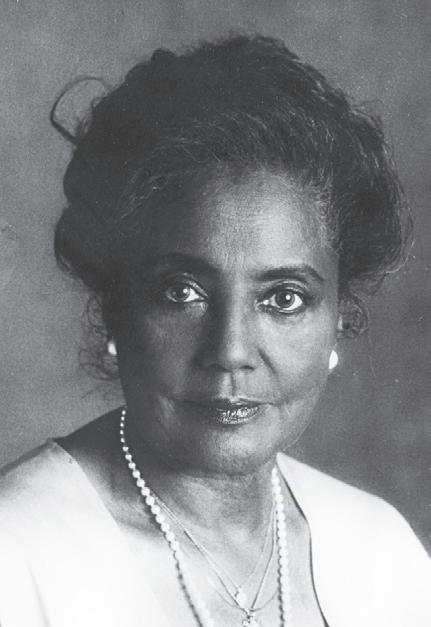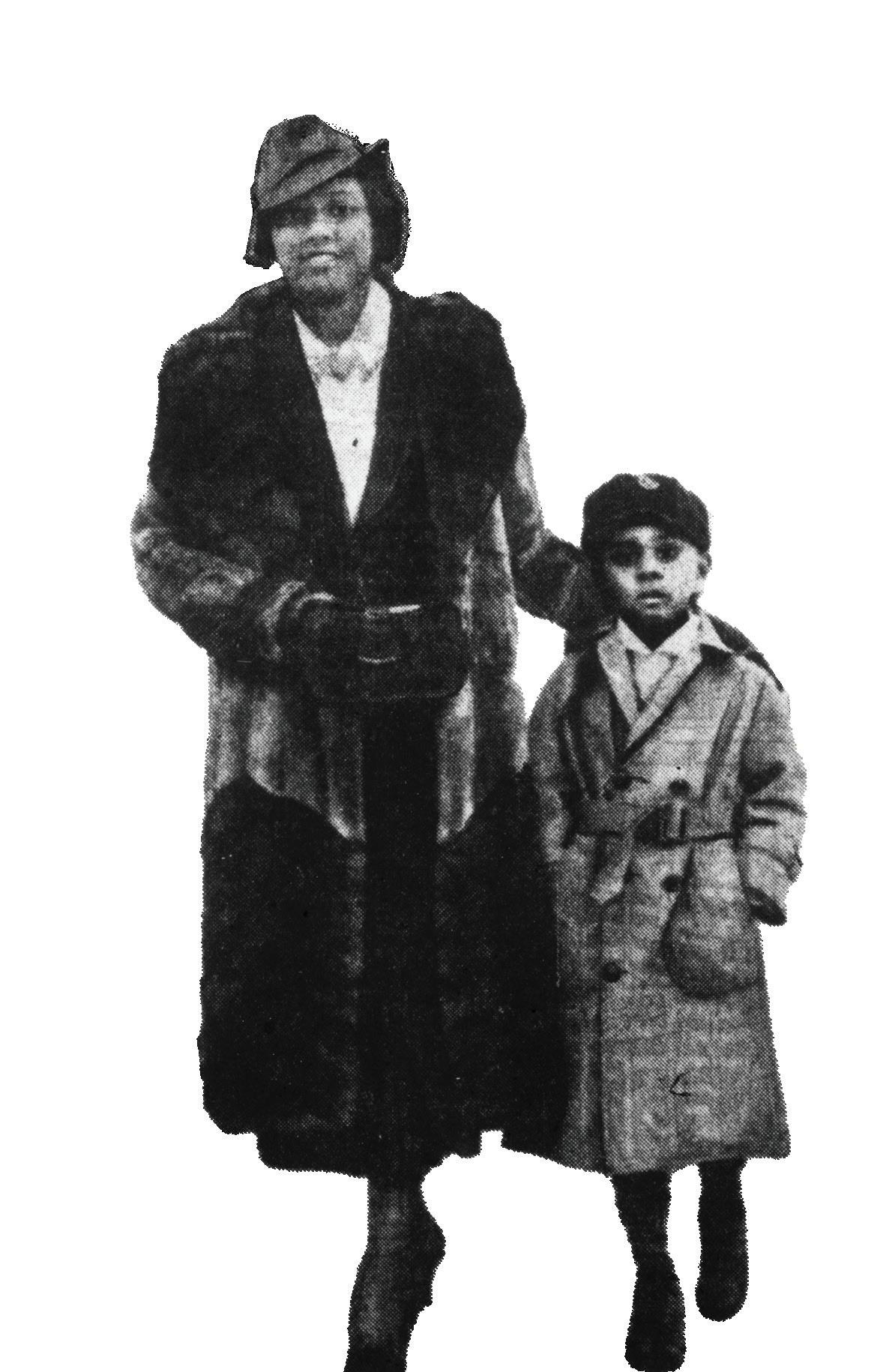




































Published by
Active Media Publishing Group
PO Box 672, Aurora, OR 97002
info@ActiveMediaUSA.com
503.825.2111
ADMINISTRATION
Matthew Nelson, Publisher Catrina Nelson, CFO
Tara Weidman, Executive Assistant
Raeann Van Arsadall, Business Development
PRODUCTION
Jeremy Okai Davis, Art Director
Donovan Darling, Creative Project Manager
Brittany Jungenberg, Director of Marketing
Kate Astle, Copyeditor
Kaity VanHoose, Social Media Manager
Justin Andress, Communications Manager
GRAPHIC DESIGN
Hilary Berg Sean Carver
Dani DeGraw Brittany Jungenberg
Morgan King Justin Nelson
Shawn Schmidt Kaity VanHoose
CONTRIBUTING WRITERS
Patti Jo Brooks Olive Gallagher
Angie Helvey Lucas Holmgren
Robert Matsumura Dennis McNabb
Peter Murphy Edward Novak
Malia Riggs Kelly Romo
Gretchen Van Lente Ty Walker
Justin Woomer Kerry Yu
CONTRIBUTING PHOTOGRAPHERS
Laurel Bice Carly Carpenter
Tyler Francke Angie Helvey
Brittany Jungenberg Malaina Kinne
Lisa Kuhlman Kara Langley
MJ Media Productions Andrew Sambuceto
Henry Schifter Hayley Starkey
ADVERTISING SPECIALISTS
Don Ormsby Bill Kistler
Stephanie Baker Peggy Jacobs
David Long Chris O’Brien
John Zobrist Brad Marti
Shelley Zeman Tina Toney Darren Dwyer
Looking to reach local consumers?
We specialize in direct-mail products: community magazine advertising, mailing inserts, postcards and more. For more details, call 503.825.2111 or email info@ActiveMediaUSA.com




By Robert Matsumura, Active Media
Few celebrations capture the spirit of indulgence and revelry quite like Mardi Gras. Famous for its dazzling parades, vibrant costumes and festive atmosphere, this iconic event draws millions of visitors to New Orleans every year. But while New Orleans seems to be the hub of all things Mardi Gras, in truth, its origins are steeped in centuries-old traditions that span continents and cultures.
Tracing the roots of Mardi Gras takes us back to the ancient pagan festivals of Europe, particularly those focused on the arrival of spring, such as Saturnalia in Rome, and Lupercalia in ancient Italy. Featuring feasting, costumes, and public processions, these celebrations were a way to cast off the doldrums of winter and welcome the renewal of life. With the rise of Christianity, these pagan celebrations were integrated into, and reinterpreted by, the Church. Mardi Gras — which translates to “Fat Tuesday” in French — emerged as the final day of indulgence before the solemn 40-day season of Lent. With Lent being a time of fasting and discipline, Fat Tuesday was that last great blowout — a time to enjoy rich foods and pleasures one last time before a long period of abstinence.
At the heart of the Mardi Gras festivities is the krewe system, “Krewe” being an organization or social club that organizes and participates in Mardi Gras parades and festivities. Each krewe has its own theme, traditions, and membership requirements, contributing to the diversity and vibrancy of the celebrations. The first krewe was the Mystick Krewe of Comus in 1857, where elaborate floats, thematic parades, and nightime revelry were first introduced.
Beyond New Orleans, Mardi Gras is celebrated globally under various names and traditions. In Brazil, Rio’s Carnival dazzles with samba parades, glittering costumes, and massive street parties reflecting Brazil’s cultural fusion of African, European, and Indigenous influences. Venice’s Carnival is synonymous with opulent masked balls and intricate costumes evoking the city’s Renaissance history. Germany’s Fasching or Karneval features parades, comedic performances, and masquerades, with Cologne hosting one of the country’s largest celebrations.

Mardi Gras arrived in North America via French explorers. On March 3, 1699, Pierre Le Moyne d’Iberville and JeanBaptiste Le Moyne de Bienville landed near present-day New Orleans and dubbed the site “Pointe du Mardi Gras” in honor of the holiday. By the early 18th century, French settlers in Mobile (modern-day Alabama) and New Orleans had established Mardi Gras traditions, featuring parades, masked balls, and feasts.
Traditional Mardi Gras foods also capture the spirit of indulgence and cultural richness. King cake, a sweet pastry decorated in the holiday’s iconic colors of purple, green, and gold, often contains a hidden figurine symbolizing luck. Whoever finds it is tasked with hosting the next party. Jambalaya, gumbo, and crawfish boils showcase the Creole and Cajun culinary heritage of Louisiana, blending French, Spanish, African, and Native American influences. Beignets, deep-fried pastries dusted with powdered sugar, are also a beloved sweet treat.
More than just a party, Mardi Gras is a living tapestry of history, culture, and community. From its ancient origins to its modern expressions, it lives on as a celebration of joy, resilience and creativity. Whether you’re catching beads in New Orleans or dancing at a samba parade in Rio, Mardi Gras draws everyone into its timeless revelry. And as the locals say, “Laissez les bons temps rouler” — let the good times roll!

Rooms or 800 sq ft $90) Not valid with any offer. Expires 7/31/24
8 Rooms or 800 sq ft (Saving $90) Not valid with any other offer. Expires 4/15/25
$195 Rooms or 550 sq ft $90) Not valid with any offer. Expires 7/31/24
4 Rooms or 550 sq ft (Saving $90) Not valid with any other offer. Expires 4/15/25

3 Rooms or 300 sq ft (Saving $30) Not valid with any other offer. Expires 4/15/25

Ingredients
8 ounces spaghetti
3 tablespoons olive oil
4 boneless, skinless chicken breasts
* Kosher salt and black pepper
1 shallot, halved and thinly sliced
2 cloves garlic, minced
1 cup low-sodium chicken broth
1 jar (6.3-ounce) sun-dried tomatoes, drained and chopped
1 chicken bouillon cube (0.4-ounce)
1 cup heavy cream
1 teaspoon dried oregano
1/4 teaspoon red pepper flakes
1/2 cup freshly grated Parmesan
1/4 cup thinly sliced fresh basil
Directions
In large pot, cook pasta in boiling water until al dente. Drain and set aside. Heat 2 tablespoons oil


in large skillet over medium-high heat. Sprinkle chicken with salt and black pepper on both sides. Cook undisturbed until golden brown, about 5 minutes. Cook other side until golden brown, about 5 minutes more. Remove to plate. Add 1 tablespoon oil and shallot to same skillet. Cook, stirring occasionally, until just tender. Add garlic, stirring continuously, until fragrant. Add broth and scrape up browned bits. Add tomatoes, bouillon, cream, oregano, red pepper flakes and 1/4 teaspoon salt. Stir until cube dissolves. Bring sauce to a boil; reduce to a simmer over medium-low heat. Nestle chicken in sauce. Cook until sauce thickens slightly and chicken registers at 165ºF, 5 to 10 minutes. Stir in Parmesan and basil. Serve with spaghetti.






















From the paramedics saving lives to the dental assistants ensuring your brightest smile, Chemeketa Community College graduates are everywhere, making a difference.
They are the auto mechanics keeping you on the road, the electricians powering your homes and businesses, and the skilled professionals driving our local economy forward.
Our community depends on their expertise, and so do local employers. At Chemeketa, we provide the training and hands-on experience needed to build a healthy, strong, and thriving community.
Will you be among our next group of graduates?
Explore our diverse career education pathways in healthcare, skilled trades, technology, and beyond. Your future starts here.
Chemeketa Community College
Building Careers, Strengthening Communities.



































n the month of February, all MWNW stores will be asking for donations to support the Senior Citizens Council of Clackamas County. This nonprofit has served seniors of Clackamas County for 50 years and counting!
Why is this nonprofit so important? Their services provide critical support to at-risk seniors and adults with disabilities who are in danger of abuse, neglect and exploitation. The highly skilled and professional staff protect the seniors’ finances, oversee bill-paying needs, and when necessary, find them a safe, clean place to live. Their staff then continue to regularly check on each client for as long as they are needed.

On average, their staff serves 750 new clients annually. 75 percent of their clients are women and 70 percent are at or below the federal poverty level. Seniors above 85 years old are the fastest growing population and are also the most in need of services. It is estimated that 1 in 6 seniors will be a victim of financial exploitation and 1 in 10 will be abused or neglected. Please help us raise funds by donating online or visiting one of our local stores.
Family-owned and -operated, dedicated to providing their customers the best products at the best prices, all while donating to and participating in their local communities, Mattress World Northwest exemplifies the best of what retail businesses have to offer. This proves that not all mattress stores are created equal.
Get a better night’s sleep and help support your local community at the nearest Mattress World Northwest store. They are open every day or you can order online at mattressworldnorthwest.com.












































































By Robert Matsumura, Active Media
On February 14th each year, millions of people around the world exchange cards, chocolates and flowers, and express their love. While Valentine’s Day is indeed a cherished tradition, its origins are less widely understood. What is the true story behind this day dedicated to romance? Was there really a Saint Valentine? To answer these questions requires a journey back to Europe during the days of the Roman Empire when Christianity was still struggling to gain a foothold in the West.
The Mysterious Saint Valentine
The origins of Valentine’s Day are shrouded in mystery, with at least three different saints named Valentine or Valentinus recognized by the Catholic Church. One widely accepted legend involves Valentine of Rome, a Christian priest in third-century Rome. According to this tradition, Emperor Claudius II banned marriages for young men, believing that single men made better soldiers. Valentine, a Christian priest, defied the emperor by performing marriages in secret for young couples in love. When his actions were discovered, Valentine was arrested and eventually executed on February 14th about 270 AD. Over the centuries, Valentine became a symbol of romantic devotion and his martyrdom was

associated with the holiday bearing his name. However, other accounts suggest that Valentine of Terni was imprisoned for helping Christians escape harsh Roman prisons. While jailed, he is said to have fallen in love with the jailer’s daughter and performed a miracle by curing her of blindness. Legend has it that he wrote her a letter signed “From your Valentine,” a phrase that has become iconic. Whether fact or folklore, these tales all emphasize Valentine’s courage, faith, and commitment to love. After much debate over the centuries, a scholarly study was published on the subject in 1966 by priest and scholar Padre Augustino Amore, which concluded that the only martyred Valentine was Valentine of Terni. According to the study, Bishop Valentine of Terni was the only Saint Valentine to be included in all the oldest martyrologies. In further support of this, in 1927, laborers on a road project in the vicinity of the saint’s supposed burial place actually discovered fragments from a Christian martyr’s tomb, thus supporting his existence.


Far before Valentine’s Day was officially established, mid-February was associated with fertility and love in ancient Rome. Celebrated from February 13th to 15th, the pagan festival of Lupercalia was a raucous
affair involving sacrifices, feasting, and ritual matchmaking.
One notable tradition involved the names of young women being placed in a jar from which men drew at random, forming temporary romantic partnerships — or sometimes lifelong bonds.
With the rise of Christianity, the Church moved to replace pagan practices with Christian observances. In 496 AD, Pope Gelasius I declared February 14th as the Feast of Saint Valentine, thus effectively Christianizing the festivities. This initiative marked the beginning of Valentine’s Day as a religious celebration, though centuries would pass before the holiday became fully associated with romantic love.

The 18th and 19th centuries saw Valentine’s Day explode in popularity among the general public.
Fueled by advances in printing technology and the development of the postal service, celebration of the holiday really took off. Affordable, massproduced Valentine’s cards became widely available featuring a plethora of sentimental verses, elaborate designs, and romantic imagery.

It was in the Middle Ages when the romantic aspect of Valentine’s Day really gained traction. By this time, Saint Valentine was already regarded as a patron of love, fueled to a great extent by the poet Geoffrey Chaucer. In his 14th-century poem “Parlement of Foules,” Chaucer linked Valentine’s Day to the pairing of birds in early spring, a metaphor for courtship and love.
The exchange of love notes and tokens flourished during this period and became a common practice among the nobility. The first recorded Valentine’s note dates back to 1415, when Charles, Duke of Orléans, composed a heartfelt poem to his wife while a prisoner in the Tower of London. His words are preserved to this day in the British Library, serving as a testament to enduring love.
In the United States, Esther Howland, nicknamed the “Mother of the American Valentine,” played a key role in popularizing Valentine’s cards. Inspired by ornate English designs, Howland began creating and marketing hand-crafted cards during the 1840s. Her efforts contributed to the transformation of Valentine’s Day into a major commercial event, laying the groundwork for the card-exchanging tradition we enjoy to this day.
In modern times, Valentine’s Day is a global celebration. In the United States, the holiday has extended beyond romantic relationships to include expressions of love and appreciation for friends, family, and even pets. Children exchange cards at school, while workplaces hold themed events to foster camaraderie.
Other countries add their own unique twists to the celebration. In Japan, chocolate takes center stage on Valentine’s Day with women traditionally gifting handmade or store-bought chocolates to men. A month later, on March 14th, men
reciprocate the gesture on White Day, gifting women white chocolate in return. In South Korea, the same two days are celebrated, but a third day is added called Black Day, in which single friends come together to celebrate being single; the name derives from a noodle dish with black sauce. In Finland and Estonia, Valentine’s Day was transformed into Friends Day and includes friends and significant others.

In the 21st century, technology has taken Valentine’s Day to the next level. Online dating apps help people forge romantic connections, while social media provides platforms for sharing love stories and memories. Virtual gifts and e-cards have also grown in popularity, reflecting the increasingly digital nature of contemporary relationships.
Over the centuries Valentine’s Day has evolved from ancient rituals and saintly sacrifices to a global celebration of love and connection. The history of this holiday showcases the universal human desire to express affection and nurture bonds. Whether Valentine’s Day means grand gestures or simple acts of kindness for you, take a moment to reflect on the rich history that has culminated in this yearly celebration of love and good will.
By Oregon Black Pioneers
Katherine Hall Bogle was a journalist and a civil rights advocate for Black Oregonians. Kathryn Hall was born in 1906 on her great-grandparents’ farm in Oklahoma Territory. Her mother Lillian was a domestic worker. Soon after her birth, the two moved to Kansas City, Missouri and then to Portland. Lillian married Herman Baker, and the family moved several times between Oregon and Washington. Kathryn spent much of her youth in Marshfield, Oregon (today the city of Coos Bay).
Kathryn later recalled the intense discrimination her family experienced in Marshfield. She changed schools several times because of bullying, and her parents faced racism at work. The Bakers eventually moved to Portland, but their fortunes were not much improved; their white neighbors often refused to speak to them.

Katherine graduated from Portland’s Washington High School, but could not find fulfilling work opportunities because of racist employment practices.
In 1927, Kathryn married Richard Bogle, a student at Oregon Agricultural College, today’s Oregon State University. Richard came from a family of Black pioneers who had been among the early Black residents of both Oregon and Washington. He took a job at the Portland Hotel and the couple purchased a home in southeast Portland.
Kathryn was a lifelong activist. In 1937, she protested the poor coverage of Black people in the Oregonian. In response, the newspaper gave her the opportunity to write her own story. Bogle’s essay, “An American Negro Speaks of Color,” described the realities

of Black Oregon life and was the paper’s first published submission from a Black author. After her essay’s publication, Bogle became a freelance journalist. She wrote for the Northwest Enterprise, the Portland Observer, and The Skanner, all prominent Black newspapers in the city Her influence gave her the ability to promote social causes as well. Bogle spent seventeen years with the Boys and Girls Aid Society, was an active member of the Portland Branch of the NAACP, and supported the relocation efforts of Vanport survivors in 1948. Bogle also organized local efforts to support the Black residents of Montgomery, Alabama during their 1955 bus boycott.

Bogle was a co-founder and lifetime member of Portland’s St. Philip the Deacon Episcopal Church, and worked for seven years as a caseworker for Good Samaritan Hospital’s outpatient clinic. In 1993, Bogle was presented a Lifetime Achievement Award by the Portland Association of Black Journalists. Late in her life,
Kathryn helped found the Friends of the Golden West, an organization dedicated to the preservation of Portland’s first Black owned hotel building.
Kathryn Bogle died in 2003 at the age of 96. She is remembered for her decades-long work to document and support Portland’s Black community.
Oregon Black Pioneers is Oregon’s only historical society dedicated to preserving and presenting the experiences of African Americans statewide. To learn more, and to support this nonprofit, visit oregonblackpioneers.org.
©Oregon Black Pioneers, 2025














A fresh and modern rom-com that hilariously and awkwardly navigates the cultural clash between two families, the movie follows Ezra (Jonah Hill), who’s Jewish, and Amira (Lauren London), who’s Black and Muslim. While they’re deeply in love they struggle to bring their families together — a task that proves to be heartfelt, relatable, and funny. Ezra and Amira’s relationship, which portrays a love that feels tender and real, is challenged not by their own doubts but by the prejudices and misunderstandings of their families, played brilliantly by Eddie Murphy and Julia LouisDreyfus. This familial tug-of-war adds a layer of complexity to the movie, and suggests that love is shaped and tested by what we can’t control. For Valentine’s Day viewers, You People serves as both a cautionary tale and a celebration of the enduring power of love, with all its imperfections. Rated R for strong language and mature themes.

Few movies capture the essence of young love quite like Say Anything. Cameron Crowe’s cult classic is the perfect combination of passion, vulnerability, and grand romantic gestures. Lloyd Dobler (John Cusack) is the prototypical lovestruck dreamer, chasing after Diane Court (Ione Skye), the class valedictorian with a complicated family life. What makes this movie so enduringly romantic is its simplicity: love here isn’t flashy but genuine. Lloyd’s now iconic boombox scene — a serenade to Peter Gabriel’s “In Your Eyes” — is pure movie magic and an example of the grand romantic gestures of the past. The movie’s ’80s vibe, with its mixtapes, payphones, and heartfelt rebelliousness, adds a certain nostalgic charm, perfect for those reminiscing about first loves. As a Valentine’s treat, Say Anything reminds us that love is about persistence, honesty, and embracing imperfection, even in a perfectly imperfect world. Rated PG-13 for mature themes.



Pixar’s Elemental is a whimsical love story set in Element City, where fire, water, air, and earth coexist but rarely mix. The movie shines as a celebration of love’s ability to transcend differences. Ember, an obviously “fiery” and passionate character, meets Wade, a gentle, free-flowing water elemental, and their connection grows in spite of social rules and personal hesitancy. Their, ahem, “chemistry,” is both touching and playful, and a play on how opposites attract. Pixar’s hallmark storytelling and gorgeous animation bring the relationship to life, from awkward beginnings to heartfelt resolution. Ember and Wade’s journey is a reminder that true love isn’t about finding someone identical to you — it’s about embracing what makes you different. Perfect for kids and the young at heart, Elemental is a Valentine’s Day treat. Rated PG.
Stream these movies where available, or rent from your local movie store, library or rental kiosk.
Valentine’s Day, celebrated annually on February 14, traces its origins to the Roman festival of Lupercalia and Saint Valentine, a martyr who performed secret marriages.
Red roses symbolize love due to their association with Venus, the Roman goddess of love.
Globally, over 145 million Valentine’s cards are exchanged annually, making it the second-most popular card-sending holiday after Christmas.
Love itself has fascinating science: oxytocin, the “love hormone,” strengthens bonds and trust, while dopamine sparks feelings of happiness and attraction. Studies show holding hands can lower stress. Whether romantic or platonic, Valentine’s celebrates the universal power of connection and affection.
“Peak” quality services and products at prices you can afford!
the industry’s inefficiencies and acknowledged the opportunity to do better. Sharing the same drive, passion, and commitment to excellence, they established Peak Heating & Air in 2018 to provide HVAC installation, maintenance, and repairs with integrity. They use only the highest quality products, maintain complete transparency regarding costs and repair times, and afford unparalleled customer service across the board. And they never compromise quality for time!

By Dennis McNabb, Active Media
Photos by Laurel Bice, Active Media
Over the past decade, HVAC installation costs have ballooned due to unnecessary overhead expenses (resulting from service providers’ inefficiencies) and brand/product price gouging. It’s unfortunate for consumers in that we often get stuck paying these higher prices without alternative options or recourse. Fortunately, some HVAC service providers exist to buck such trends. They employ more effective and conscientious methods to deliver installation services of the highest quality while still keeping overhead costs at a minimum. One such company is our very own locallyowned and-operated Peak Heating & Air.
Peak Heating & Air is the brainchild of owners Shane Rodriguez and Troy DeYoung. After working for several years at larger corporate entities, they were each exposed to many of
Services include but are not limited to: maintenance, repair, and replacement of air conditioning units, heat pumps, furnaces, refrigeration units, and thermostats. They can also run a full home energy assessment.
As a Trade Ally of Energy Trust of Oregon, they are licensed to provide tools and recommendations to help you save money on energy solutions that are both costeffective and environmentally responsible. They offer financing through their partnership with FTL Finance and a vast array of service plans designed to best suit your specific needs.
When it comes to choosing HVAC service providers, there is no shortage of alternatives. Few, however, promise the same level of care, expertise, and quality of work as Peak Heating & Air, and at such a fair price. Because this is a locally-owned business, both owners have close ties to the community. They are heavily involved in many local charities and regularly donate time, money and equipment to various causes. The Dallas community is home and they pride themselves on treating customers and staff members alike as friends and family.
Don’t waste your time or your hard-earned money looking elsewhere. Peak Heating & Air is the premier business of its kind in the region and boasts an A+ rating from the Better Business Bureau. Whether you need a quick service call or a full energy assessment, contact them today for a free consultation. On a side note, if you are an HVAC expert looking for a job, they are hiring!
For more information, check out their website: peakheatingandair.net or call 503-623-0800.
PEAK HEATING AND AIR is founded on providing installation, maintenance and repairs of HVAC systems with a level of integrity that is greater than traditional companies. We only work with materials of the highest quality and our suppliers are known for their superior performance.
We are a Trade Ally of Energy Trust which affords us the opportunity to connect our customers with savings on energy solutions that are cost effective and environmentally responsible.
Experience PEAK performance and efficiency that lasts for years to come.
Make sure to ask us about our 10 year labor warranty!








By Donovan Darling, Active Media
Necco wafers, candy hearts, Sweethearts, conversation hearts. The candy goes by many names, with silly messages and a chalky consistency. The notorious candy hearts have a strange history that harkens back to a Civil War-era pharmacy and America’s first candy machine.
The story begins in 1847, with a pharmacist named Oliver Chase, who invented a machine to produce lozenges. Back then, apothecary lozenges were popular for sore throats and other illnesses. But 175+ years ago, the process to make a lozenge was labor-intensive: pulverizing medicine and sugar paste by hand with a mortar and pestle, kneading dough, then rolling and cutting out little discs. Considered the first candy machine, Oliver invented a lozenge cutter to simplify the process and smartly shifted from making medicine to making candy, founding Chase and Company, which later became New England Confectionery Company, or Necco!
Here’s where the story gets really interesting. Legend tells us that Union soldiers during the Civil War carried Necco wafers, known as “hub wafers,” and Oliver Chase might have been inspired by the love letters these soldiers carried. Historians also suggest that perhaps Daniel Chase, Oliver’s brother, was inspired by the growing popularity of Esther Howland’s Valentine’s Day cards which began selling in the mid-1800s. A third and more likely explanation is that the candy wafers were inspired by the oddly named cockle, a popular candy shaped like a scallop seashell which contained a “motto” printed on a thin roll of paper stuffed inside. Daniel may have cleverly improved upon this design, printing the messages directly onto candy by using a felt roller pad wetted with red vegetable coloring.
However, Daniel’s “conversation candies” or “motto lozenges” weren’t heart-shaped until later in 1902. Until that time their candy was sold in a simple disc shape, but eventually they were sold in shapes like baseballs, watches and horseshoes. When the candy hearts were introduced they were hugely successful, and over the next 100 years other smaller companies began selling similar candies. In 1990, Necco acquired Stark Candy Company and became the “leading manufacturer in conversation hearts.” Today, the company claims to manufacture nearly 100,000 pounds of Sweethearts every day and approximately 8 billion candy hearts each year.
But what is a candy heart exactly? Necco offers classic Sweethearts, as well as chocolate, sugar-free, “dazzled,” and “color your own” varieties. According

to their website: “Manufacturers combine sugar, corn syrup, cornstarch, flavors, gums and colors into a mixing machine to create a dough, which then goes into a machine that presses it flat, stamps it with sayings and cuts it into hearts. After 30 minutes in a “drying tunnel,” the six different heart flavors are mixed together and packaged.” I guess they’re not made out of chalk!
Daniel Chase’s original printed lozenges were larger and therefore included longer phrases, like “HOW LONG SHALL I HAVE TO WAIT? PLEASE BE CONSIDERATE” and “WHY IS A STYLISH GIRL LIKE YOU A THRIFTY HOUSEKEEPER?” Obviously, times have changed! There were also weddingthemed sayings, such as “MARRIED IN WHITE, YOU HAVE CHOSEN RIGHT,” “MARRIED IN SATIN, LOVE WILL NOT BE LASTING.” Previous sayings like the deeply dated “FAX ME” and “GROOVY” have been discontinued. The more timeless messages like “BE MINE” and “KISS ME” you may be more familiar with. Whatever your feelings on candy hearts, they’re a fun and fascinating little piece of American history.

Moonlight Beauty
































































Astoria reinvents itself through tourism, history, and the arts

By Robert Matsumura, Active Media
Nestled at the mouth of the mighty Columbia River, where the freshwater meets the salty brine of the Pacific, lies Astoria, Oregon — the oldest permanent American settlement west of the Rocky Mountains. Rich in maritime history, with stunning vistas and quirky small-town charm, Astoria has long been both a cultural and historical beacon for the Pacific Northwest.
The town of Astoria has its roots in the early 19th century when the famed Corps of Discovery led by Meriwether Lewis and William Clark arrived on the shores of the Pacific. After trekking thousands of miles across uncharted wilderness, the expedition reached the Pacific Ocean in November 1805. Establishing Fort Clatsop nearby, they endured relentless rain and isolation that winter before returning overland eastward the following spring. Though brief, their stay marked the first significant American presence in the area and laid the path for future settlements.

John Jacob Astor and the Founding of Astoria
It was John Jacob Astor, a wealthy New York entrepreneur, for whom the city was named. Seeking to expand his fur trade empire into the Pacific Northwest in 1811,
Astor’s Pacific Fur Company established Fort Astoria at the mouth of the Columbia River. While it was a risky venture in uncharted territory, Astor believed in the region’s potential as a hub for the lucrative fur trade. While the location was indeed propitious on the economic front, the settlement faced geographic isolation, harsh weather, and international conflict which proved challenging for the early settlement.
During the War of 1812, the British invaded the fort, renaming it Fort George. While the fort changed hands multiple times over the decades, the name “Astoria” endured, a testament to John Jacob Astor and his early ambitions for the region. The city would go on to represent the first permanent U.S. foothold on the Pacific Coast and grow to be an important hub for trade and exploration.

Strategically located at the mouth of the Columbia River, Astoria was a natural center for commerce. In the mid-19th century, as the fur trade waned, other industries quickly stepped up to take its place. It wasn’t long before timber and fishing had become the backbone of Astoria’s economy with the verdant forests of the Pacific Northwest at its backdoor and the waters of the Columbia and the Pacific teeming with fish.
By the late 19th century, Astoria was a bustling port city with immigrants, particularly from Scandinavia and China, arriving in droves to work in the fishing industry and nearby canneries. Salmon in particular was the engine that drove Astoria’s economy and canneries lined the riverfront. At its peak, the city was home to dozens of canneries and a thriving fishing fleet, whose bounty was shipped globally, earning it the title of “Salmon Capital of the World.”
Astoria’s immigrant communities left an indelible mark on its character. Scandinavian immigrants, largely Finns, Swedes, and Norwegians, brought the traditions of their homelands with them, particularly cuisine and a hearty work ethic. The Finnish community established Astoria’s Uniontown neighborhood and constructed the iconic Suomi Hall, which remains a cultural landmark today. By 1905 Astoria’s Finnish population had grown to be the largest west of the Mississippi.
In addition to the Scandinavian immigrants, Chinese workers played a crucial, yet often overlooked, role in the development of Astoria. Working in canneries and laying railroads, the Chinese contributed to the city’s growth, despite facing considerable discrimination and adversity. The Chinese influence can still be felt in Astoria’s history with remnants of the once-thriving Chinatown offering glimpses into their contributions,
including work on the seawall along the waterfront and the jetties at the mouth of the Columbia.
Despite its economic successes, Astoria faced its share of adversity. The Great Fire of 1922 devastated the city, laying waste to much of the downtown and displacing thousands. Over time, Astoria was rebuilt with brick and concrete replacing the previous wood structures.
In the decades that followed, the timber and fishing industries began to wane and Astoria’s economic future appeared uncertain. However, the resilient pioneer spirit surfaced once again as the city persevered and reinvented itself as a hub for history, arts, and tourism. The historic downtown, well-preserved Victorian architecture, and rustic waterfront have consistently drawn visitors wishing to experience the charm of this riverside town.

In the 1980s Hollywood discovered Astoria. The city’s scenic beauty and vintage charm made it an ideal location for films. The movie that really put Astoria on the cinematic map was the 1985 classic “The Goonies.” Fans still flock to visit iconic spots in the movie such as the Goonies House and the Astoria Column. Other movies filmed in Astoria included “Kindergarten Cop,” “Free Willy,” and “Short Circuit.”
Astoria Today: A Blend of Old and New Today, Astoria is a vibrant mix of past and present. Its historic roots are evident in landmarks like the Astoria Column,

the towering monument that offers panoramic views of both the Columbia River and Pacific Ocean, and the Flavel House Museum, a wonderfully preserved Victorian mansion. Once dominated by canneries, the waterfront is now home to breweries, coffee shops, and boutiques — a lively gathering place for locals and visitors alike.
Astoria’s maritime legacy is honored at the Columbia River Maritime Museum where visitors can explore the treacherous history of the Columbia Bar, known as the “Graveyard of the Pacific.” The museum highlights the courage of the bar pilots and Coast Guard crews who navigate these treacherous waters.
More than just a historical footnote, Astoria is a living, breathing reflection of the Pacific Northwest’s rugged beauty and pioneering spirit. As the first permanent American settlement on the West Coast, the city brims with historical significance, and whether you’re drawn to it for its maritime heritage, cinematic charm, or breathtaking landscapes, the story of Astoria will continue to fascinate those who visit this gem of a town where the mighty Columbia meets the great Pacific.










